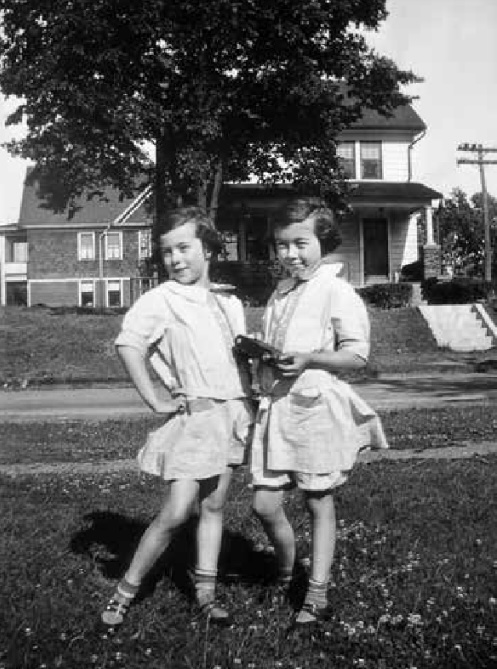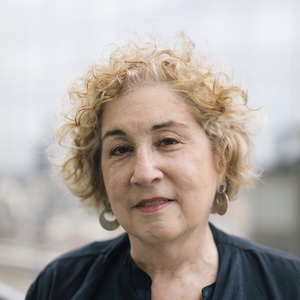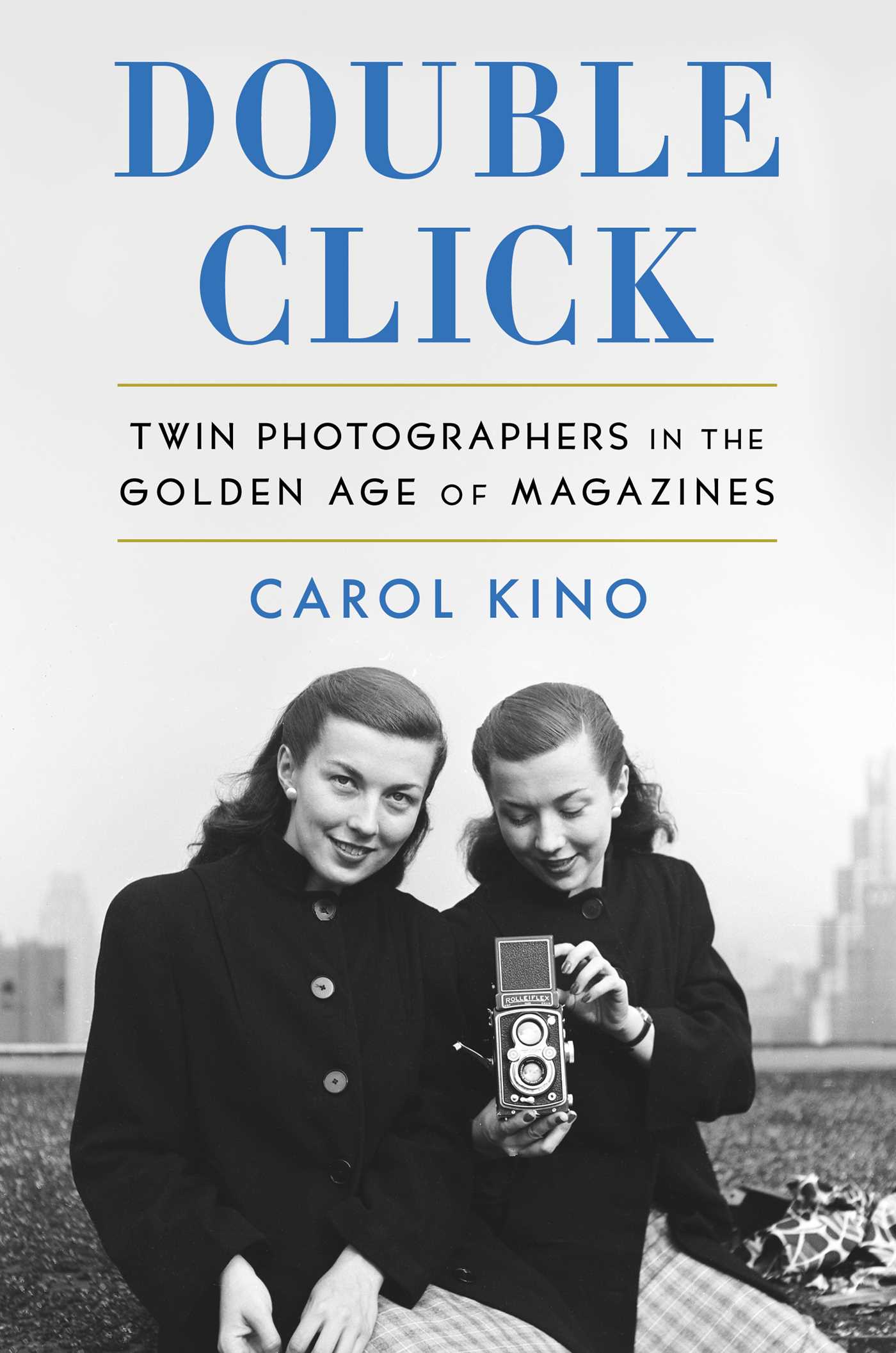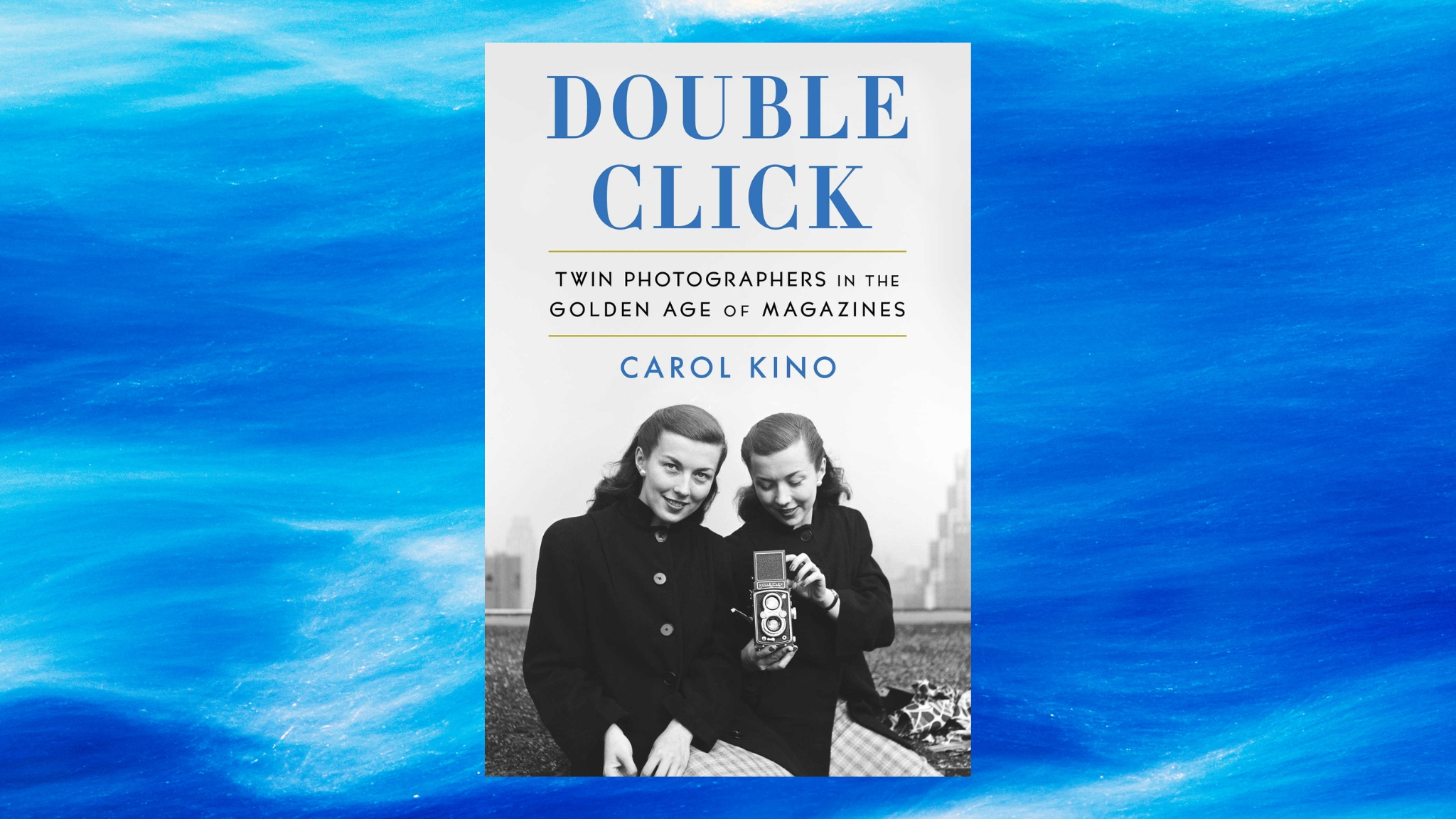Double Click: Twin Photographers in the Golden Age of Magazines by Carol Kino
What's It About?
A riveting dual biography of the McLaughlins—identical twin sisters who became groundbreaking photographers in New York during the glamorous magazine golden age of the 1930s and 40s.The beautiful, chic McLaughlin sisters were born in Brooklyn in 1919. Within five months their father died of influenza, leaving the twins in the clutches of their over-protective mother Kitty.
But Kitty was resourceful. She belonged to an Irish Catholic clan that lived in picturesque Wallingford, Connecticut, and wasted no time moving back home. Consequently, Kathryn and Frances McLaughlin, who became acclaimed celebrity photographers during the postwar era, grew up in fairly sedate suburbia. They would not stay put, however.

The twins in Wallingford at about age ten. Franny is on the left striking a pose, while Fuffy holds the camera, ca. 1929. (Copyright © 2023 Estate of Anna O’Rourke)
In Double Click: Twin Photographers in the Golden Age of Magazines, art critic Carol Kino conjures the society in which the twins came of age. Turning 18 in 1937, they returned to Brooklyn to attend college at Pratt Institute. There they lived with Kitty yet managed to have ringside seats at the transformation of theater, art, music, and literature as modernism and bohemianism pervaded New York City.
Photography As An Art Form
Since 1900, photography had increasingly been recognized as an art form, thanks in large part to the photographer and entrepreneur Alfred Stieglitz. The Museum of Modern Art began its collection in 1930 and would establish a Photography Department in 1940. During these years, photography emerged as an alternative to illustration in books and magazines. It was happening!
Kathryn, now calling herself “Fuffy,” and Frances, dubbed “Franny,” had been given a fine German camera as a high school graduation gift. One year after they started at Pratt, the school installed a photography lab in the basement of a campus building.
The twins were off and running. They photographed the geometry of the city, streetscapes, each other, and friends. Meanwhile, they became acquainted with surrealism, Dadaism, and Bauhaus design; movements brought to the U.S. by artists and architects who fled Europe in the 1930s.
At the New School for Social Research in Greenwich Village, they studied with Yasuo Kuniyoshi, a Japanese émigré whose paintings of pensive women would inspire the twins’ fashion photography. Franny also pursued painting at the Art Students League with Reginald Marsh, whose colorful work portrayed the underbelly of urban life.
From War to Fashion and Beyond
Armed with increasingly sophisticated cameras, Fuffy and Franny launched themselves into a world transitioning from depression to war. The two women had vibrant personalities, pluck, and boundless energy, demonstrated by their imaginative entries to dozens of magazine contests.
Perhaps most important, the twins rode the wave of consumer culture which never slowed down. During the Nazi occupation of Paris, New York became the capital of the fashion world. Designers featured “the American style,” sportswear, new fabrics and silhouettes. They even influenced women’s military uniforms. Fuffy and Franny were present at just the right moment.
The twins started their careers as “girl Fridays,” assistants to well-known women photographers like Toni Frissell and editors like Margaret Hockaday—Double Click is so packed with names that the author has included a cast of characters appendix.
In 1943, while the twins were still living with Kitty, Franny made a fantastic leap from mail order catalogues (Montgomery Ward, Spiegel) to Conde Nast, publisher of Vogue, Glamour, Vanity Fair, and Mademoiselle, where she would flourish for the next 23 years.

Franny and Fuffy (with spyglass) on Jimmy’s property in Montauk, soon after he purchased it. They wear matching sundresses by Claire McCardell, ca. 1944. (Copyright © 2023 Estate of James Abbe Jr.)
In this highly competitive field, Fuffy could not help feeling “privately devastated,” Kino writes. She decided to freelance, working out of the studio of Jim Abbe Jr., a brilliant Harper’s Bazaar photographer. Fuffy’s greatest opportunity came in 1945 when Charm Magazine’s new editor, Jane Troxell, began to use her work almost exclusively. After the war, Fuffy and Jim Abbe flew to Las Vegas for his divorce and their wedding. Fuffy’s career eventually dwindled as she reared four children and a stepson. The sisters both died in 2014.
It appears to be Franny’s work that has endured. She developed a “filmic” approach to photography, once explaining that — poised to snap a photograph — she always asked herself: “Who is she? Where is she? What is she doing there?” Franny wanted each picture to tell a story.
Like her sister, Franny married a photographer: Leslie Gill, one of the pioneers of modern still life photography. The author underscores that Franny, Leslie, and their circle were encouraged and supported by innovators like Alex Liberman, a Russian Jewish refugee who became Vogue’s art director; Cipe Pineles, the first woman art director of a mass market magazine (Seventeen and Charm); and Alexey Brodovitch, Harper’s Bazaar’s Russian émigré art director. Double Click bursts with enthusiasm and excitement just like the McLaughlin twins. Kino has given us a double biography and evocation of a remarkable time in American life, business, and art.
About Carol Kino:
 Carol Kino’s writing about art, artists, the art world, and contemporary culture has appeared in publications such as The New Yorker, The Wall Street Journal, The New York Times, The Atlantic, Slate, Town & Country, and just about every major art magazine. She was formerly a fellow at the Dorothy and Lewis B. Cullman Center at the New York Public Library and the USC Annenberg/Getty Arts Journalism Program. She grew up on the Stanford campus in Northern California and lives in Manhattan. Double Click is her first book.
Carol Kino’s writing about art, artists, the art world, and contemporary culture has appeared in publications such as The New Yorker, The Wall Street Journal, The New York Times, The Atlantic, Slate, Town & Country, and just about every major art magazine. She was formerly a fellow at the Dorothy and Lewis B. Cullman Center at the New York Public Library and the USC Annenberg/Getty Arts Journalism Program. She grew up on the Stanford campus in Northern California and lives in Manhattan. Double Click is her first book.
(Photo Credit: Jackson Krule)





